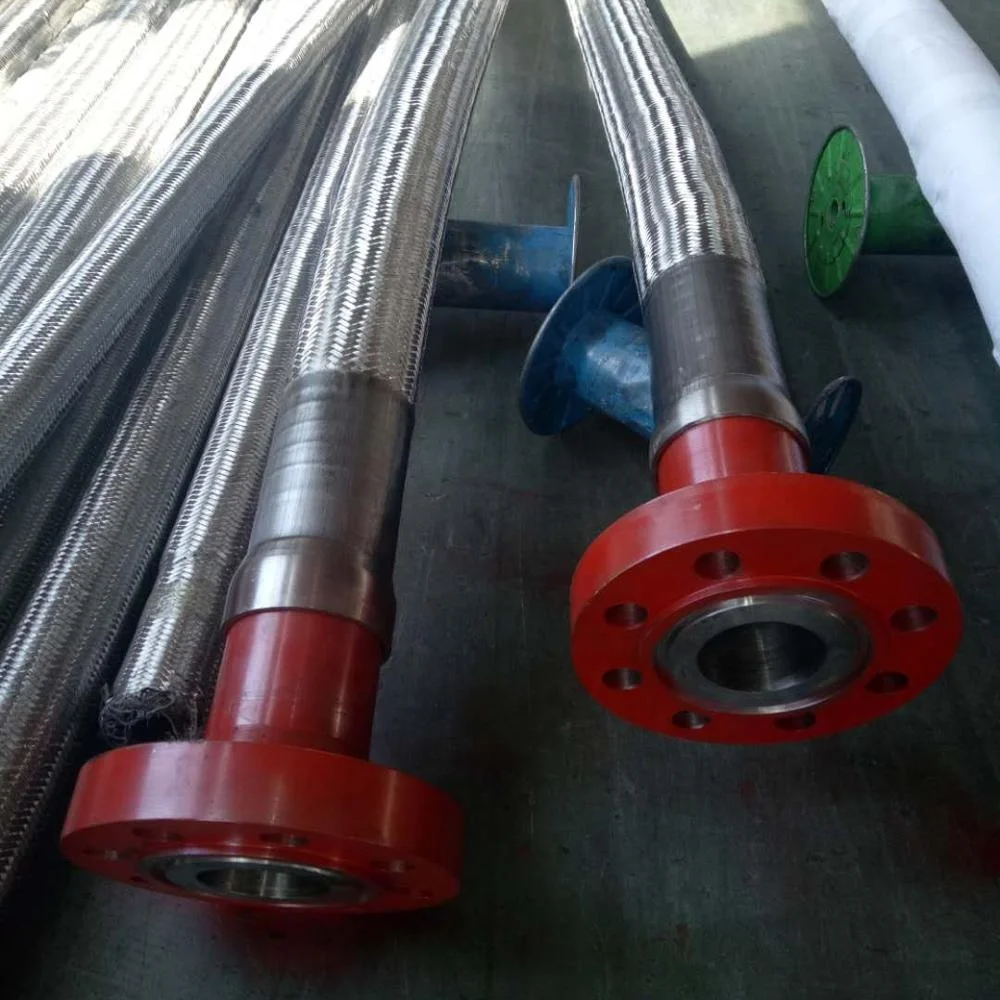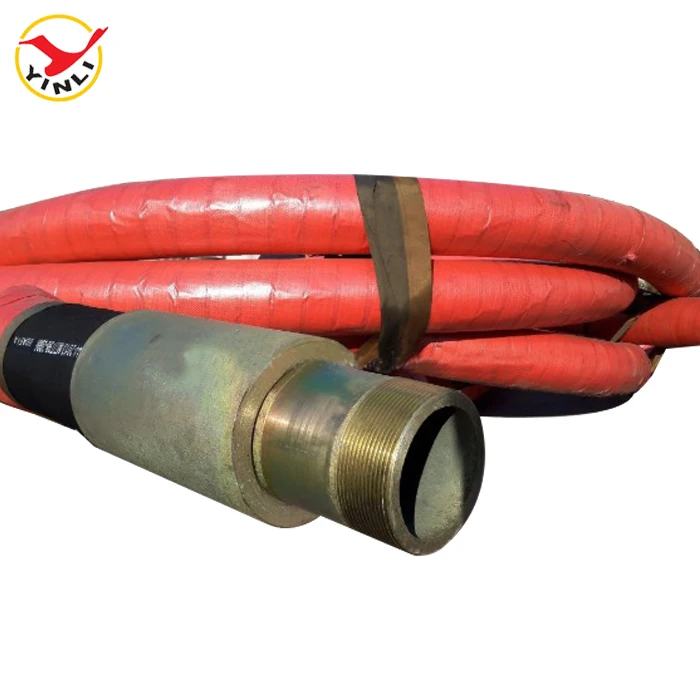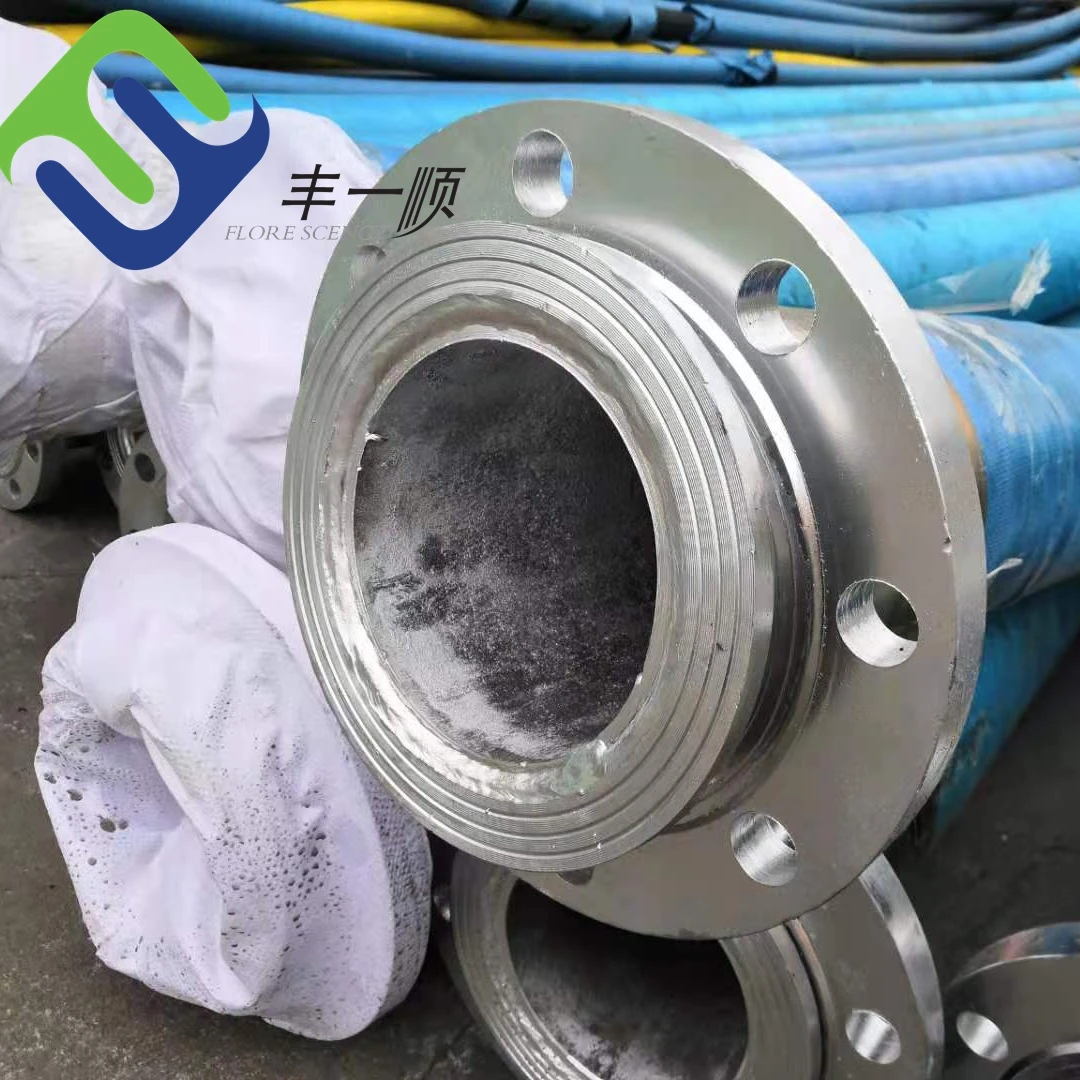kelly hose failer for sale

Flexible drilling rubber hoses play an important role in petroleum extraction. They should suffer high operating pressure, extreme operating temperature, abrasion and other inferior elements. Our special compounded synthetic rubber has been proven an effective and economical way to reject these problems. All our oilfield drill hoses are manufactured as API 7K or other related specifications.
Steel cable reinforcement loads most working pressure up to 15,000psi. The wires are usually zinc-plating or copper platting to improve steel wire resistant against rust and corrosion. Due to the thick reinforcement, the hoses should be handled or stored in correct way to avoid kicking or crushing. They will substantially decrease their rated operating pressure.
Rotary hose, Kelly hose, cement hose, mud hose, jumper hose and vibrator hose and choke & kill hoses are the most popular oilfield rubber hoses. They convey high-pressure drilling fluid from one place to another. Many end fittings are provided to satisfy different applications. Most end fittings are made according to API standards. Special order is also available.

Owing to over twenty years market experiences in supplying high-pressure flexible oilfield rubber hoses, Hebei Qianli Rubber Products Co., Ltd. has been an important partner of many famous customers including America, East Asia, Africa and other countries and regions in the world.
Oilfield drilling hoses are vital components for rig drilling systems. Rotary drilling hose, mud hose, cement hose, Kelly hose, vibrator hose are working under high-pressure. Once the hose failure, it will cause catastrophic damage to the equipment, body health and property. Our professional engineers can help you solve any problem in safe storage, handling and other technical problems.
Drilling hoses should work in harsh environments. Therefore, high performance such as abrasion resistance, pressure capacity and life expectancy should be paid much attention to when you select them. If you have any problem with the drill hoses, contact us – bond@hebeiqianli.com.
Our drilling hoses are equipped with API end fittings – flanges, NPT threads and butt-weld unions to meet requirements on the market. Bespoke end fittings are also available.

Rotary drilling hose assemblyoften carries high-pressure drilling liquids from the top of the mud standpipe to the rotary swivel. Rotary hose, especially slim hose, is often used on small or medium-size drilling rigs such as water well operations, water well, water well core drill and other applications. Flexible rotary/drill hose can carry mud or air.
Our rotary hose is often equipped with API end fittings and available for 2000psi to 4000psi operating pressure. The lift eyes on the ends are designed to prevent kicking or crushing when handling.

Drilling hose also called Oilfield drilling hose, rotary drilling hose, is hollow, thin-walled, steel or aluminium alloy piping that is used on drilling rigs. It is hollow to allow drilling fluid to be pumped down the hole through the bit and back up the annul-us. It comes in a variety of sizes, strengths, and wall thicknesses, but is typically 27 to 32 feet in length (Range 2). Longer lengths, up to 45 feet, exist (Range 3).
Oilfield drilling hoses have found their wide application in the extraction of minerals such as oil & gas drilling. With the help of the drill pipe, a drilling mud is injected into the well at a very high pressure, most often technical water, hydrogel solution or clay-based solutions. The drill hose is also used between oil tankers and drilling wells in the sea. Drilling hoses can be used on stationary and mobile drilling rigs, for drilling wells in the sea.
The drilling rotary hose is suitable for flexible connection between the top of the drilling riser and the swivel which can move vertically. It resists corrosion of hydrogen sulfide and can deliver water, oil, mud high‐pressure media.
Rotary drilling hose is mainly used for conveying water-based or oil-based mud and other fluids in the working temperature of -30 °C to +82 °C. It is often used for oil fields, cement repairing, geological exploration and water conveyance for coal excavation. It is composed of three parts: tube, reinforcement and cover. The tube is made from NBR, which is resistant to abrasion, corrosion and oils. The reinforcement is made from 2-8 layers of high tensile and high strength spiraled steel wire, making the hose have solid structure and resistant to high pressure. The cover is made from high quality synthetic rubber, mainly chloroprene rubber, making the hose resistant to abrasion, corrosion, cut, weather, ozone, aging and sunlight. The hose has longer service life as a result.
Cover: high quality synthetic rubber, mainly chloroprene rubber, making the hose resistant to abrasion, corrosion, cut, weather, ozone, aging and sunlight.
As drilling operation methods evolve, become deeper, with increasing pressure and higher temperatures, JYM can provide a range of drilling and cementing hose solutions to meet these challenging conditions. Our key offering includes rotary drilling / vibrator hose grade D and E, choke and kill, cement and sour hoses. The JYM range supports the pumping of mud at very high pressure during drilling and exploration campaigns.
JINYUAN RUBBER CO., LTD. has been an important partner of many famous customers including America, East Asia, Africa and other countries and regions in the world. Oilfield drilling hoses are vital components for rig drilling systems. Rotary drilling hose, mud hose, cement hose, Kelly hose, vibrator hose are working under high-pressure. Once the hose failure, it will cause catastrophic damage to the equipment, body health and property. Our professional engineers can help you solve any problem in safe storage, handling and other technical problems. Our drilling hoses are equipped with API end fittings – flanges, NPT threads and butt-weld unions to meet requirements on the market. Bespoke end fittings are also available. Hose quality is our life. It is our aim to provide constantly high level of quality. All production processes and procedures have been strictly inspected. The final inspection before shipment is the strictest and any inferior products are not allowed in our company. When you purchase our products, we will provide considerable after-sales service. If the drill rotary hoses fail in warranty time, they can be returned without costing you one cent of shipment.

13 Causes Of Hose Failure 1) Mis-application -Perhaps the greatest cause of failure is using a hose, fitting, or clamp in an application that it is not designed for.
2) Kinking at or near the fittings -Once the barb of the fitting cuts into the tube of the hose, the product being conveyed can escape into the reinforcement and eventually lead to bubbling or blistering of the cover within several feet of the end.
3) Temperature Exposure- As temperature increases pressure ratings decrease. Excessive hot or cold temperatures will lead to discoloration, cracking, or hardness - as well the build up of static electricity if hose wire has not been ground properly.
5) External damage to hose carcass -Kinks, crushed sections, and cover damage which exposes reinforcement will eventually break down the reinforcement and lead to a hose failure.
6) Exceeding the minimum bend radius -Kinking, crushing, or forcing a hose to bend beyond its minimum bend radius (measured from the inside edge of the hose, not the centerline). This is commonly seen on high pressure hoses or vacuum hoses.
7) Defective hose or improperly installed or selected clamp -Failure from a defective hose will typically occur in the first few hours of service, such as pin holes, blow-outs, or tube and cover separation. Improperly installed or selected clamps can result in the coupling ejecting from the end of the hose. Always confirm the manufacturer recommendations based on STAMPED information.
8) Tube or cover not compatible with fluids or environment -Usually results in discoloration, swelling, sponginess, or the breakdown of the hose carcass. For material handling hoses, always rotate to ensure even wear of the hose tube.
9) Old age -Hose is not ‘pipe’, it is a flexible component that will degrade over time. Shelf or service life will range from 1 to 20+ years, depending on its composition, application, and environment. Older hoses become discoloured, stiff, or burst at low pressures.
10) Incorrect hose length -Too short of a length does not allow the hose to expand/contract due to changes in pressure or temperature and causes excessive stress on the fittings or hose reinforcement.
11) Twisting hose during installation or service -Twisting a hose rather than naturally bending the hose will reduce life. It is estimated a 7% twist when installing a hose in a permanent application can reduce hose life by 90%.
12) Poor workmanship -Hose and fittings are made of a unique blend of different materials with complex manufacturing methods - human error, inconsistent machinery, or poor product quality or raw materials can result in defects or variances greater than allowable tolerances. As for failure at the end fitting, ends blowing off assemblies can be a result of sub-standard coupling procedures or due to the “mixing-and-matching” of incompatible hose, couplings, or clamps.
13) Contaminated media being transferred -Foreign particles or residue in the fluid or air can flow through the tube and break it down or wear it out prematurely. Always clean hoses prior to installing in field to ensure there is no cross-contamination.

The magnitude of force caused by a high pressure hose failure incident can lead to serious injury and can be difficult and dangerous to quickly restrain. Additionally, spills and equipment damage can cause costly cleanup and downtime. The whip stop hose safety restraint system, also known as a whip sock, will hold the hose in check until the operator can safely eliminate the hose pressure.
Hobble clamps (shown in red) are available for a wide variety of pipe diameters and can be custom made to specifically meet your requirements. Shackles are available with bolt and cotter pin or carabiner option for applications where hoses need to be frequently disconnected.
In order to ensure that the whip stop system is completely secure, make sure that the pipe, frame, or equipment that the hobble clamp is shackled to is also capable of withstanding the maximum force that your hose failure may cause.
The application of self fusing or rubberized tape where the end of the whip stop meets the hose is recommended when the outside diameter of the hose is within acceptable range but has a looser fit.

Parker"s Series 7234 Wildcatter Oilfield Slim Hole Rotary Drill Hose is compatible with many oilfield media and provides excellent high pressure service across multiple drill site applications. The hose incorporates high pressure and high temperature capabilities and features a cover that is resistant to abrasion, oil and weathering to provide maximum performance. Series 7234 is qualified with permanent crimp couplings for a safe and secure connection and provides robust service life in challenging applications.
• Couplings attached with bands or clamps may reduce the working pressure of the hose assembly to less than the maximum rated working pressure of the hose. Refer to NAHAD Industrial Hose Assembly Guidelines

A kelly hose is a piece of mining equipment. Specifically, it refers to a piece of equipment used in the mining of fluid or semi-fluid resources, such as oil and natural gas. The main purpose of a kelly hose is to allow the drill string to be raised and lowered at the same time that drill fluid is being pumped through it. This is important, as drill fluid is critical to the mining process.
In most cases, a kelly hose is classified as a large-diameter hose. This means that the inside diameter is usually between 3 and 5 inches (about 7.6 cm and 12.7 cm). This wide diameter allows for a significant rate of flow and reduces the likelihood of a blockage occurring in the hose.
The kelly hose must also be able to withstand large amounts of pressure. This applies primarily to the pressure of the fluid flowing through the hose. For this reason, it is often made of highly durable material and is generally reinforced with steel.
In a derrick or drilling rig, the kelly hose connects the standpipe, which is the rigid metal shaft that delivers the mining fluid, to the swivel, which is the piece that supports the weight of and controls the rotation of the drill string. Its purpose is to provide a flexible drilling fluid conduit, as a rigid conduit would be unable to move with the swivel and would therefore disallow movement of the drill string and, subsequently, the bit.
The drilling fluid, sometimes called drilling mud, carried by a kelly hose is critical to operations in several ways. It keeps the bit cool, which helps reduce friction and failure. It also cleans the bit and carries away drill cuttings so they cannot damage the drill assembly. Some varieties are used for additional purposes, such as preventing corrosion and providing hydrostatic pressure. Drilling fluid is not necessarily fluid, but may, in fact, be a solid, liquid, gas or other combined form.
The kelly hose is so named because of its connection with the kelly, the actual mechanical piece that ejects the drilling fluid over the drill string. It may alternatively be called a mud hose or a rotary hose. Failure can occur, despite the rugged construction of the hose. Such failure can lead to damage to the rig or a failure to operate. Failed kelly hoses must be repaired or replaced before mining operations can safely and effectively resume.




 8613371530291
8613371530291